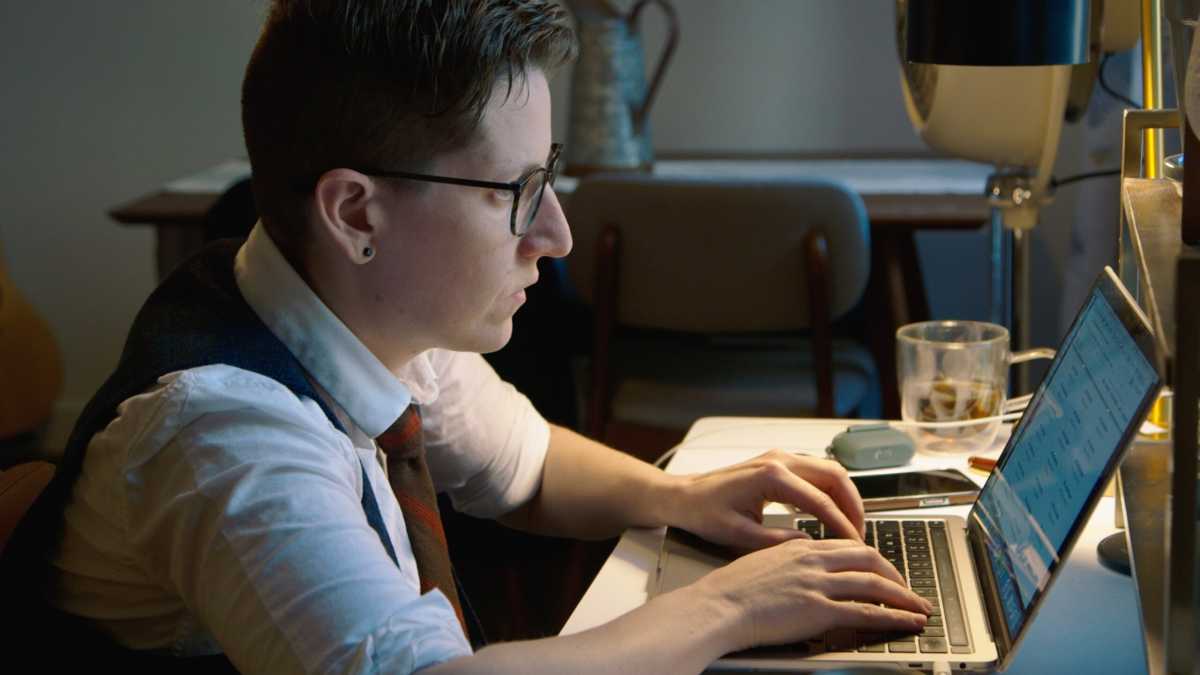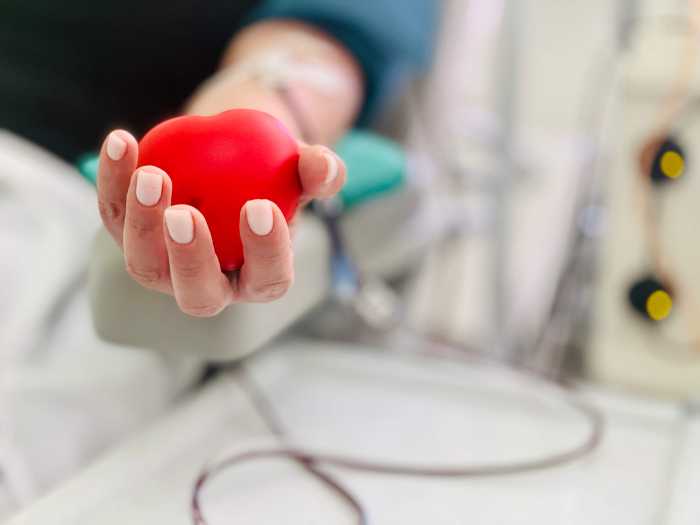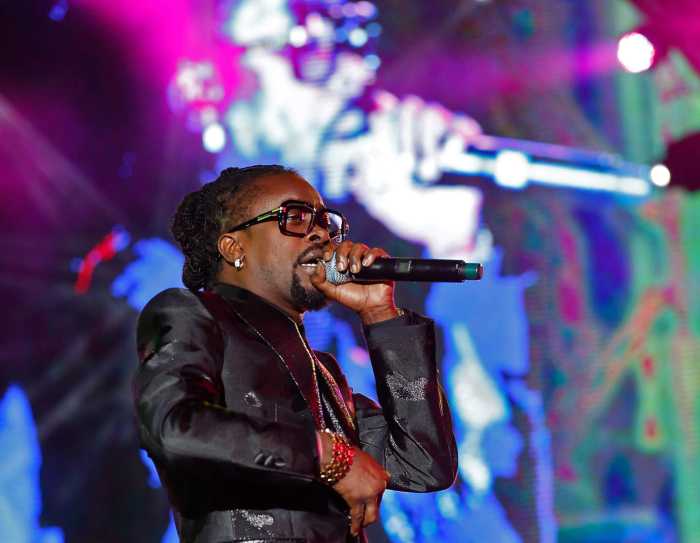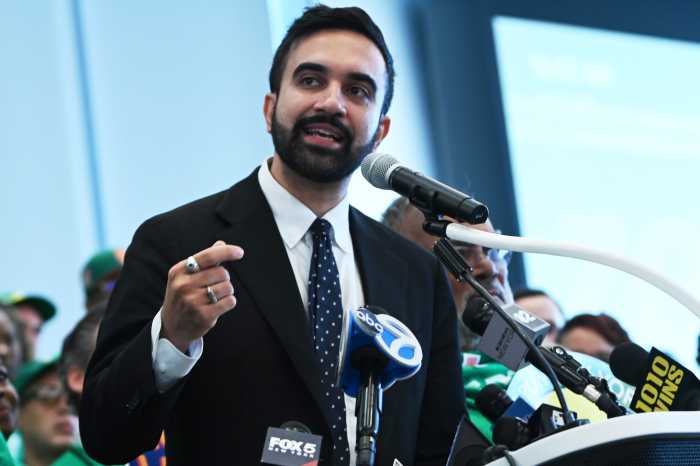Less than two months into 2024, journalism has already been devastated by job losses and shutdowns of important outlets. In January, the L.A. Times laid off more than 20% of its reporters. Conde Nast folded the music website Pitchfork into a vertical under GQ, letting most of its staff go. The website The Defector burned through its $50 million investment in nine months and didn’t even have the courtesy to let its writers know it was going out of business. These are just the starting point. In this climate, “Breaking the News,” a documentary about a digital news start-up founded by female and non-binary journalists, doesn’t need to demonstrate its importance. The 19th* posts stories with angles sidelined by legacy media, such as a Jan. 31 article on elderly women who’ve become climate activists.
The credit sequence of “Breaking the News” demonstrates Hollywood’s history of romanticizing journalism via newsrooms depicted as a sea of white men. The inclusion of real news anchors and writers in this montage shows this demographic’s basis in fact. Yet the 19th* embraced a somewhat old-fashioned vision of journalism, seeking to find a role for women and non-binary individuals within it. (In surveying the coverage of women in media, the film never mentions the rise of feminist blogs in the 2000s.) They cared more about partnering with the Washington Post than going viral on Twitter.
“Breaking the News” opens just before the beginning of a Zoom meeting between co-founder Emily Ramshaw and a potential investor. The birth of the 19th*, which was also founded by Amanda Zamora, coincided with the pandemic. As a result, its principals are filmed at home (often with their partners and children) or on Zoom calls. It existed without a physical space, with the editors living in different cities. (The film’s three directors, Heather Courtney, Princess A. Hairston and Chelsea Hernandez, appear to have begun shooting under similar circumstances.) Working with the Washington Post, Errin Haines broke the story of the killing of Breonna Taylor. The documentary includes a Zoom meeting discussing the place of Amy Cooper’s false accusations against Chris Cooper in the history of white women’s role in propping up American racism.
Shockingly, these events took place less than four years ago. In “Breaking the News,” the 19th* is defined by three issues: the pandemic, the 2020 election, and the overturning of Roe v. Wade. Its treatment of the last one is a bit rushed, crammed into half an hour. The film would’ve felt more through if it devoted another 20 minutes to this subject. Still, the 19th* seemed easier to pin down before it expanded. Throughout the film, the audience sees the number of people on employee Zoom meetings rapidly multiply.
The central staff seemed aware of the pitfalls of racism and the importance of having women of color make decisions. Even though the site’s name refers to the Amendment that gave women the right to vote, the asterisk is present as an acknowledgement that it still barred Black women from doing so under Jim Crow laws. However, the site didn’t give much thought to what devoting itself to women’s news at a time when the gender binary is being questioned might mean. Non-binary reporter Kate Sosin speaks about their alienation during its early days when colleagues didn’t consider the implications of starting a meeting by addressing people as “all you sisters.” Sosin sounds exhausted from a barrage of inadvertent microaggressions. From what it suggests, things have improved. After the criminalization of abortion in Texas, Sosin covered the implications of the new law for trans men. By 2022, 10% of The 19th*’s employees were non-binary.
Ramshaw insists on championing the 19th* as an “independent” outlet, even as she denies bothsidesism and rejects the phrase “non-partisan.” They didn’t always get this right: interviewing Kellyanne Conway just before the coup attempt on Jan. 6, 2021 aged like milk. But “Breaking the News” lets its reporters’ personal experiences and their impact on their writing shine through. The directors filmed Haines having to wait four hours in line to vote in her Philadelphia neighborhood. She observes that it took a white astronaut much less time to cast a vote from space. Sosin traveled to Massachusetts to visit a health care clinic where doctors are mostly trans.
As a documentary, “Breaking the News” faces the challenge of showing a very recent past whose effects are still shaking out. If its structure is front-loaded, 2020 can already be seen as history, while the impact of the defeat of Roe v. Wade has just begun. But the story of the 19th* is enticing enough to demonstrate its value and make a case for a follow-up after this fall’s election.
“Breaking the News” | Directed by Heather Courtney, Princess A. Hairston and Chelsea Hernandez | Airs on PBS Feb. 19th at 10 PM, streams on PBS app and YouTube



































